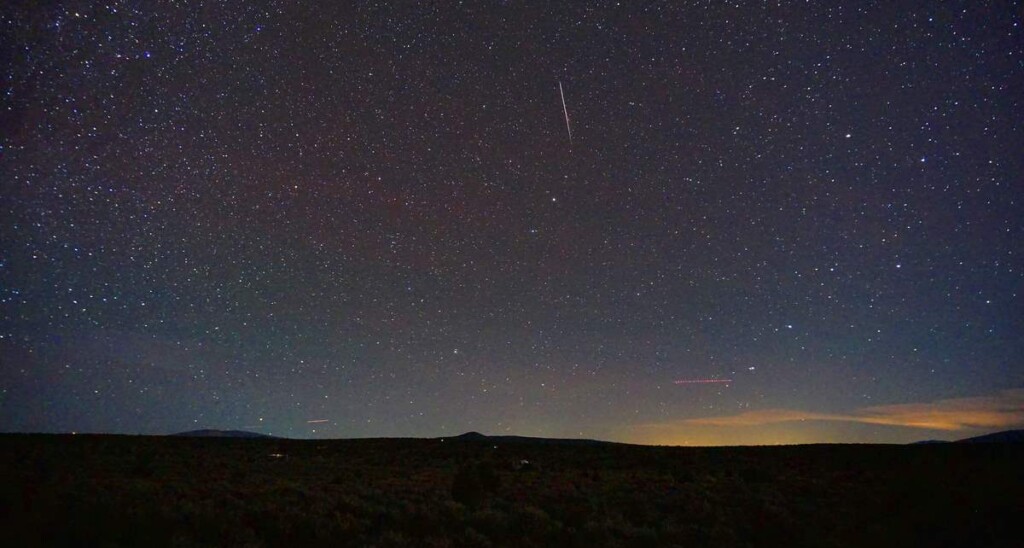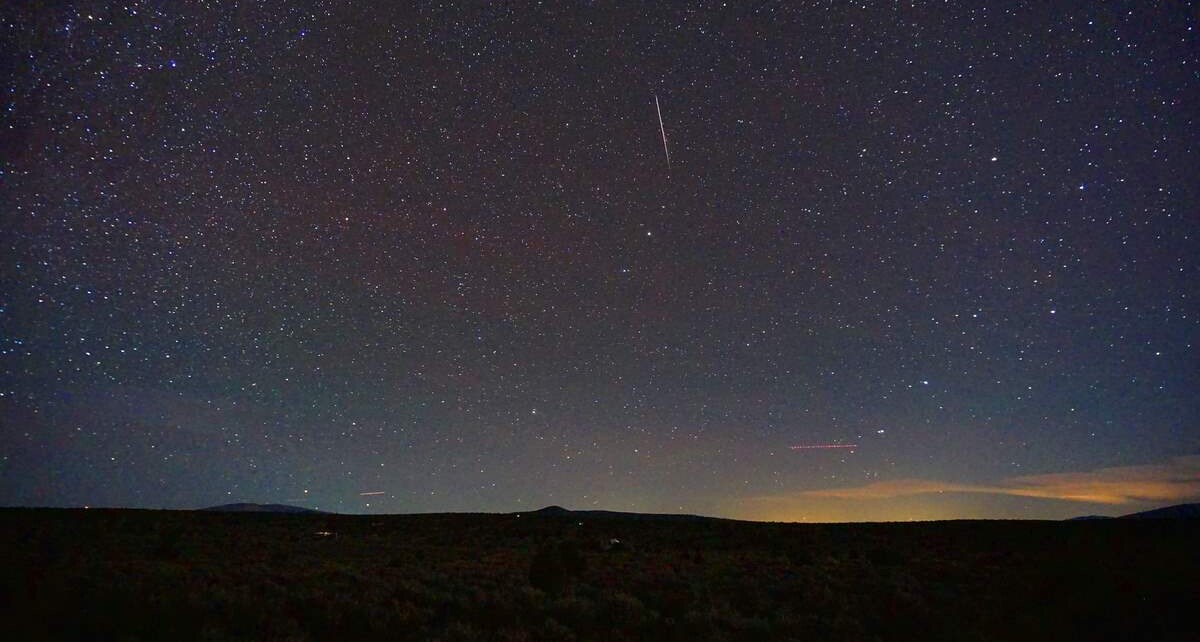
On the night of October 8th, the Earth will pass through a meteor shower radiating from the constellation Draco, an event that stargazers await with great anticipation.
That’s because the Draconid Meteor Shower can often display a peak rate of shooting stars of just a few per hour, but, every few years, exceeds all others for activity.
In 2011, the Draconids approached a rate of 600 per hour; more than the hyper-active Geminids and Perseids, and in 1933, topped out at 6,000 per hour.
There are reasons to be hopeful for a good show if you’re a stargazer. The Draconid shower is expected to peak around midnight (8th into the 9th of October) so there’s no reason to wake up intolerably early.
The light from the Moon can sometimes obscure the faint light of shooting stars, but a waning crescent moon means that lunar illumination will be just 32% that evening.
To find the constellation of Draco, the great serpent, its body snakes like the letter ‘S’ only backwards, with the tip and lowest section of its tail sitting between the Big Dipper (below) and the Little Dipper (above).
These shooting stars come from the comet 21/Giacobini-Zinner.
“Because this comet has an orbital period of nearly seven years, the next perihelion won’t come until 2025. So we’re not expecting an outburst this year. But, then, no one really knows for sure,” writes EarthSky.com
If the Draconids don’t impress, don’t worry—just 11 days later will be the peak of the Orionids, one of the more routinely active meteor showers.
Originating from the easy-to-locate constellation of Orion’s Belt, they are expected to be at their zenith from the night of October 20th, and through the a.m. hours of October 21st.
One may see up to 21 shooting stars per hour, or around 1 every three minutes.
Much of this information, as usual, comes from Valerie at Space Tourism Guide, who details that for almost all of October the Earth will be passing through meteor showers, including the two already mentioned, and others like the Cameleopardids and the Southern Taurids.
If asked what he will be looking for this year, this author would write that he looks forward to seeing the Pleiades, aka, the Seven Sisters, aka M45, which will be especially visible on October 19th when it passes very close to the newly-waning full moon. The Pleiades can be seen in a dark sky with the naked eye, but any old set of binoculars makes them truly dazzling to behold.
SHARE This Great Activity On October Nights With Your Friends…




















